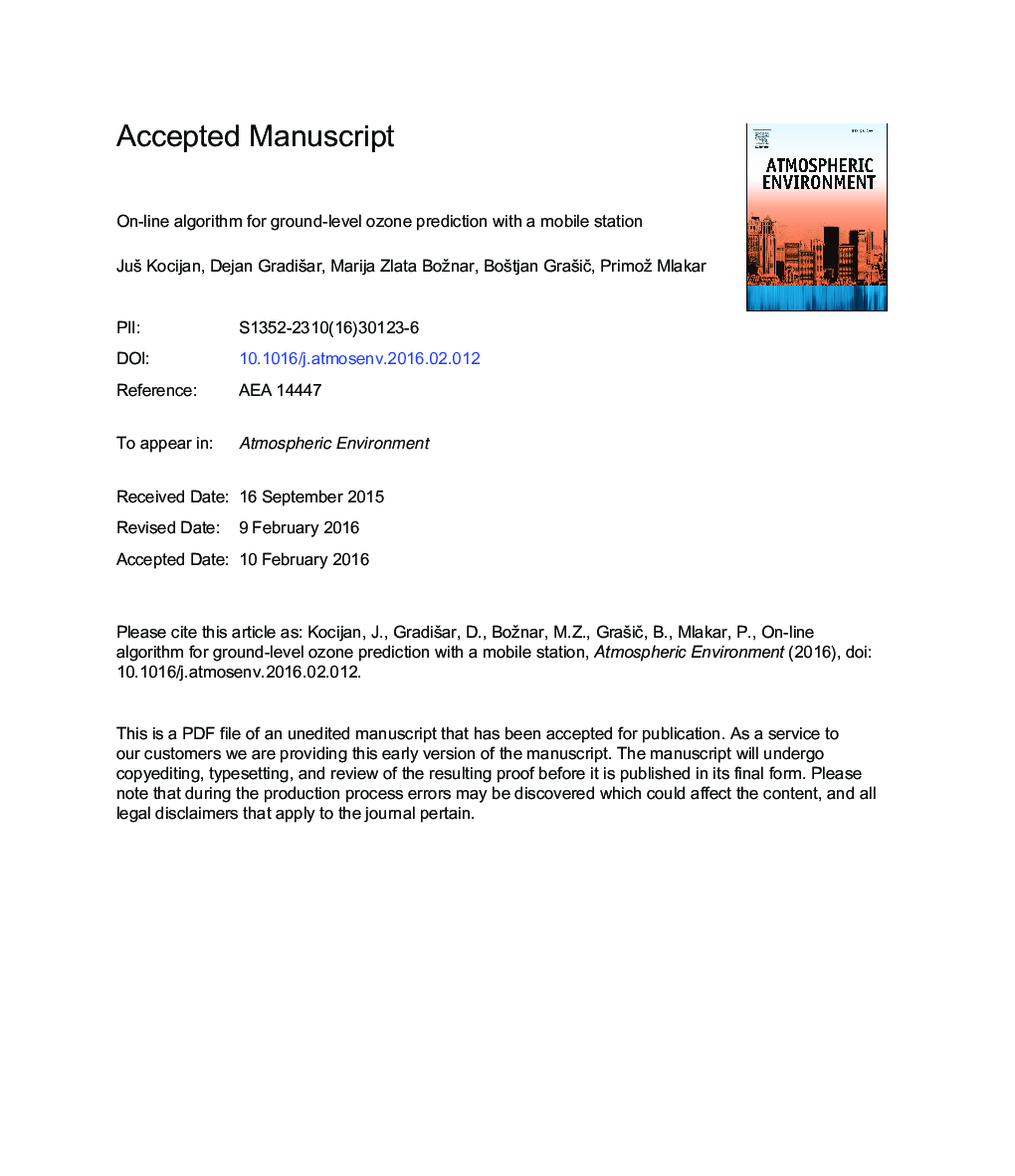| Article ID | Journal | Published Year | Pages | File Type |
|---|---|---|---|---|
| 6336482 | Atmospheric Environment | 2016 | 28 Pages |
Abstract
It is important to be able to predict high concentrations of tropospheric ozone and to inform the population about any violations of air-quality standards, as defined by international regulations. Although first-principle models that cover large geographical regions and different atmospheric layers are improving constantly, they typically still only cover geographical regions with a relatively low resolution. Such model predictions can be problematic for the micro-locations of a complex terrain, i.e., a terrain with a large geographical diversity or urban terrain. For such micro-locations, statistical models can be utilised. This paper presents a modelling and prediction algorithm that can be used in, or in accordance with, a mobile air-quality measurement station. Such a mobile station would enable the set-up of a statistical model and a relatively rapid access to the model's predictions for a specific geographical micro-location without a large quantity of historical of measurements. Uncertainty information about the model's predictions is also usually required. In addition, such a model can adapt to long-term changes, such as climate changes. In the paper we propose Gaussian-process models for the described modelling and prediction. In particular, we selected evolving Gaussian-process models that update on-line with the incoming measurement data. The proposed algorithm for the mobile air-quality measurement and the forecasting station is evaluated on measurements from five locations in Slovenia with different topographical and geographical properties. The obtained evaluation results confirm the feasibility of the concept.
Related Topics
Physical Sciences and Engineering
Earth and Planetary Sciences
Atmospheric Science
Authors
JuÅ¡ Kocijan, Dejan GradiÅ¡ar, Marija Zlata Božnar, BoÅ¡tjan GraÅ¡iÄ, Primož Mlakar,
